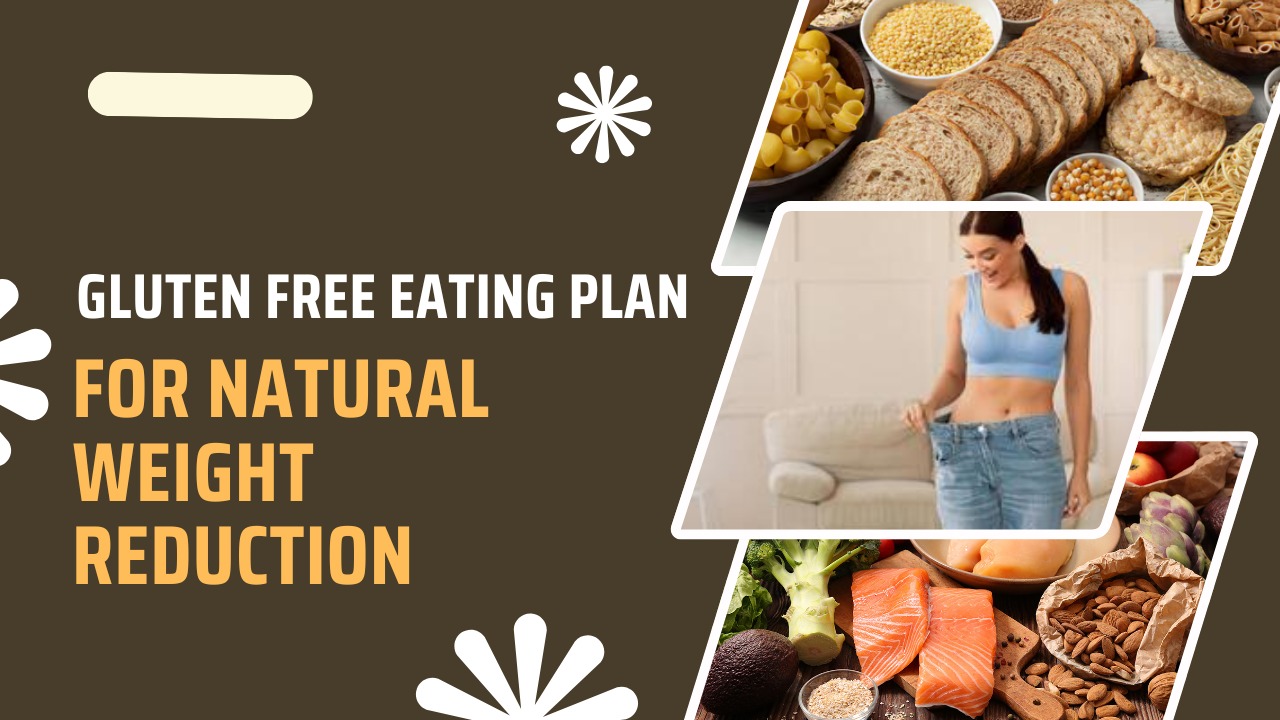The gluten free diet weight loss meal plan has gained popularity not only among individuals with celiac disease or gluten sensitivity but also among those looking to shed excess weight. By eliminating gluten—a protein found in wheat, rye, and barley—many people aim to reduce bloating, improve digestion, and promote overall health.
However, switching to gluten-free products doesn’t automatically lead to weight loss. Many processed gluten-free foods are high in sugar and calories. For a gluten free diet weight loss meal plan to be truly effective, it must focus on whole, unprocessed foods like lean proteins, fresh vegetables, fruits, and gluten-free whole grains such as quinoa and brown rice.
A well-planned gluten-free diet can help improve energy, reduce inflammation, and support long-term weight management. The key is balance—combining nutrient-dense meals with proper portion control, hydration, and physical activity to ensure healthy and sustainable fat loss while meeting your body’s nutritional needs.
In this article, we’ll explore how a gluten-free diet can aid weight loss, outline top tips for planning your meals effectively, and provide a comprehensive understanding of gluten-free foods, the potential benefits, and some common mistakes to avoid.
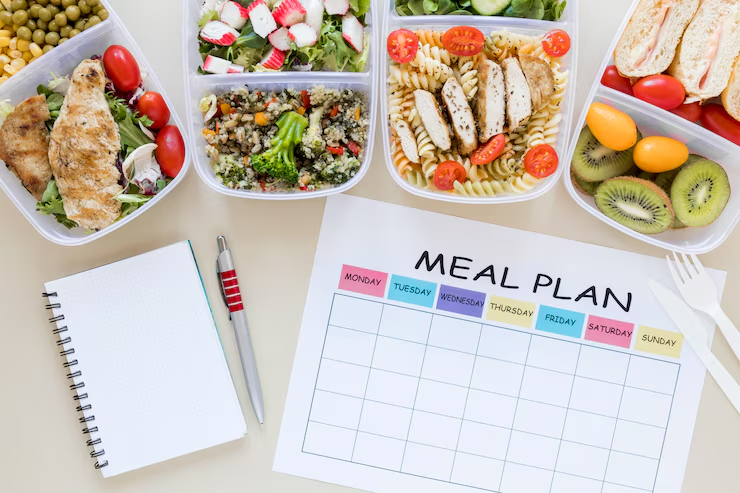
What Is a Gluten-Free Diet ?
A gluten free diet weight loss meal plan eliminates foods containing gluten—a protein naturally present in wheat, rye, barley, and sometimes oats (unless specifically certified gluten-free). For individuals with celiac disease or gluten sensitivity, avoiding gluten is essential to prevent symptoms like bloating, fatigue, and digestive distress.
Interestingly, many people without diagnosed gluten issues are turning to gluten-free diets as a strategy to lose weight and feel healthier. The reason? A gluten free diet weight loss meal plan often encourages the elimination of processed foods, refined carbs, and sugary snacks—common culprits behind weight gain.
Instead, these meal plans emphasize naturally gluten-free, nutrient-rich foods such as leafy greens, fruits, lean meats, fish, eggs, legumes, and gluten-free grains like quinoa, brown rice, and millet. This shift can lead to reduced calorie intake, better digestion, and improved energy levels.
For best results, a gluten free diet weight loss meal plan should be well-balanced, avoiding the trap of relying on high-calorie processed gluten-free alternatives. With mindful planning, it can support sustainable fat loss and overall wellness.
Why Gluten-Free Diets Can Help with Weight Loss
✅ Reduced Processed Food Intake
Most gluten-containing processed foods like white bread, pastries, crackers, and packaged snacks are high in sugar, saturated fats, and refined carbs.
Eliminating these from your diet naturally lowers calorie intake and reduces consumption of “empty calories.”
A gluten free diet weight loss meal plan encourages choosing cleaner, less processed options.
✅ Increased Emphasis on Whole Foods
A gluten-free approach often leads to greater consumption of natural, nutrient-dense foods.
These include vegetables, fruits, legumes, lean proteins (like chicken and fish), seeds, and gluten-free grains such as quinoa, millet, and brown rice.
Whole foods are higher in fiber and nutrients, and lower in calories—supporting fat loss and satiety.
✅ Enhanced Digestive Health
Individuals with gluten sensitivity or intolerance benefit significantly by cutting gluten, which may reduce bloating, gas, cramps, and inflammation.
Improved gut function boosts nutrient absorption and metabolism, contributing to effective weight loss.
✅ Stabilized Blood Sugar Levels
Gluten-containing processed foods can spike blood glucose, leading to energy crashes and increased hunger.
A gluten free diet weight loss meal plan avoids high-GI foods, helping regulate insulin response and reducing cravings throughout the day.
These combined effects make a gluten-free strategy not only a safer alternative for sensitive individuals but also a structured and health-conscious method for sustainable weight loss.
Top Tips for a Successful Gluten-Free Weight Loss Meal Plan
Focus on Whole, Unprocessed Foods
When following a gluten free diet weight loss meal plan, prioritizing fresh, unprocessed foods is key. Whole fruits and vegetables are naturally gluten-free and packed with essential nutrients, fiber, and antioxidants. They help reduce inflammation, support digestion, and keep you feeling full without adding excess calories.
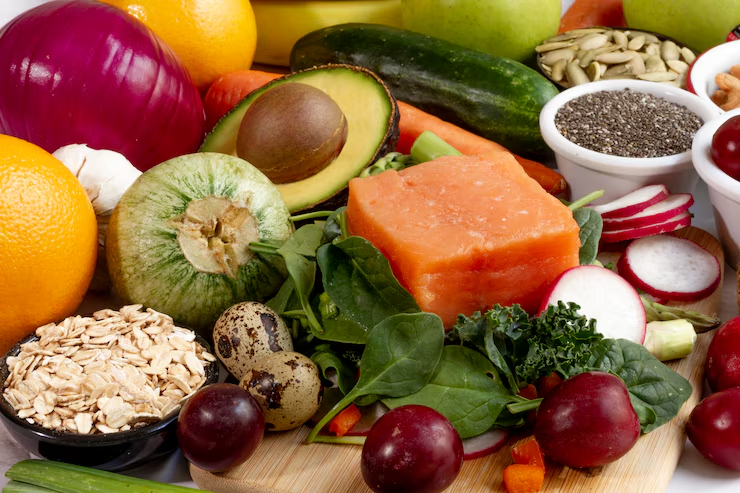
Lean proteins like chicken, turkey, fish, eggs, and legumes also play a vital role in this diet plan. These protein sources help maintain muscle mass during weight loss while promoting satiety and balanced energy levels throughout the day. Protein-rich meals can also reduce cravings, making it easier to stick to your weight loss goals.
Don’t forget to include gluten-free grains such as quinoa, brown rice, millet, and buckwheat. These options offer complex carbohydrates and fiber, which keep blood sugar levels stable and prevent energy crashes. A balanced gluten free diet weight loss meal plan that emphasizes whole, clean ingredients can lead to more effective and sustainable fat loss.
Examples:
Fruits: Apples, berries, oranges, bananas
Vegetables: Leafy greens (spinach, kale), broccoli, carrots, bell peppers
Proteins: Chicken breast, turkey, fish, tofu, eggs, legumes
Grains: Quinoa, brown rice, buckwheat, millet
Eliminate Gluten-Containing Processed Foods
When following a gluten free diet weight loss meal plan, it’s essential to focus on whole, natural foods. Opt for fresh fruits, vegetables, lean proteins, and gluten-free whole grains like quinoa, brown rice, or millet. These options are not only rich in nutrients but also help you stay full longer thanks to their high fiber content, reducing the urge to snack unnecessarily.
Avoid processed foods such as white bread, pasta, and packaged snacks, which often contain gluten and contribute to blood sugar spikes, cravings, and weight gain. Even gluten-free alternatives like cookies or chips can be loaded with added sugars and unhealthy fats, making them a poor choice for weight loss goals.
The foundation of a successful gluten free diet weight loss meal plan lies in clean, balanced nutrition. Cooking at home allows you to control ingredients, minimize hidden gluten, and ensure your meals are aligned with your weight loss and health objectives.
Instead, opt for whole food alternatives:
Homemade gluten-free bread made from almond flour or coconut flour
Gluten-free pasta made from brown rice or quinoa
Gluten-free snacks made from whole vegetables and fruits
Prioritize Protein and Fiber-Rich Meals
Protein and fiber play a crucial role in any effective gluten free diet weight loss meal plan. These two nutrients help control hunger, reduce cravings, and maintain stable blood sugar levels throughout the day. Prioritizing them in your meals keeps you fuller for longer and can prevent unnecessary snacking.
Incorporate lean, protein-rich options like grilled chicken, turkey, fish, tofu, legumes, and eggs. These foods provide the building blocks your body needs for muscle repair and metabolism, both of which support healthy fat loss. A gluten free diet weight loss meal plan that includes adequate protein can also preserve muscle mass during calorie restriction.
Pair your proteins with fiber-rich vegetables such as spinach, kale, broccoli, and carrots, along with fruits like berries, apples, and pears. Add gluten-free whole grains like quinoa, brown rice, or buckwheat to round out your meals. This combination supports digestion and sustains energy levels, helping you stay on track with your goals.
Sample meal ideas:
Grilled chicken salad with mixed greens, quinoa, and a lemon vinaigrette
Stir-fried tofu with broccoli, carrots, and brown rice
A smoothie made with spinach, protein powder, almond milk, and chia seeds
Keep an Eye on Portion Sizes
Portion control is a critical component of any gluten free diet weight loss meal plan. While gluten-free foods can be healthier, that doesn’t automatically mean they’re low in calories. Many gluten-free products—like breads, pastas, and baked goods—still contain added sugars, oils, or starches that can contribute to weight gain if eaten in excess.
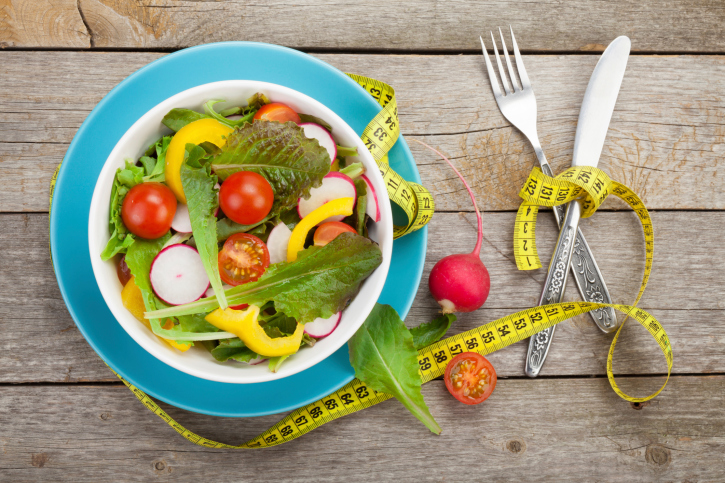
Being mindful of portion sizes helps you manage your calorie intake without feeling deprived. Measure your servings of grains, fats, and even fruits to stay within your nutritional needs. For example, a cup of cooked quinoa or a handful of nuts can be part of a healthy gluten free diet weight loss meal plan—but doubling these portions regularly can slow progress.
Eating slowly and using smaller plates can also support better portion control. Listen to your body’s hunger cues and avoid distractions like screens while eating. These small habits reinforce mindful eating and long-term weight loss success.
Choose Healthy Fats
Healthy fats play a key role in any effective gluten free diet weight loss meal plan. Contrary to popular belief, not all fats are bad—unsaturated fats can actually support weight loss by keeping you full longer and helping your body absorb essential vitamins. Choosing the right kinds of fats makes a big difference.
Focus on incorporating nutrient-rich sources such as avocados, almonds, walnuts, chia seeds, flaxseeds, and olive oil. These foods are naturally gluten-free and packed with healthy fats that provide long-lasting energy without spiking your blood sugar. Including them in moderation can enhance the flavor and satisfaction of your meals.
When planning your gluten free diet weight loss meal plan, aim to pair healthy fats with fiber and protein. This balanced combination not only keeps hunger at bay but also supports better metabolism and nutrient absorption, helping you stay on track with your weight loss goals in a sustainable and delicious way.
Healthy fat options:
Avocados
Chia seeds
Flaxseeds
Walnuts, almonds
Olive oil, coconut oil
Stay Hydrated
Hydration is a key but often overlooked part of any gluten free diet weight loss meal plan. Many times, we confuse thirst with hunger, leading to unnecessary snacking and excess calorie intake. Drinking enough water throughout the day can help manage appetite and support overall weight loss efforts.
Water also plays a critical role in digestion and metabolism. Staying hydrated helps your body process nutrients more efficiently and flush out toxins. If plain water feels boring, try adding lemon slices, cucumber, or mint to enhance the flavor without added calories or sugar.
For those following a gluten free diet weight loss meal plan, it’s especially important to focus on hydration, as some gluten-free foods are higher in fiber and may require more water for proper digestion. Aim to drink at least 8 glasses of water daily, and increase your intake if you exercise regularly or spend time in hot weather.
Plan Your Meals Ahead of Time
Meal planning is an essential component of a successful gluten free diet weight loss meal plan. When you prepare your meals ahead of time, you’re more likely to stick to your health goals and less likely to grab processed or gluten-containing foods in a pinch. It sets you up for consistent, mindful eating.
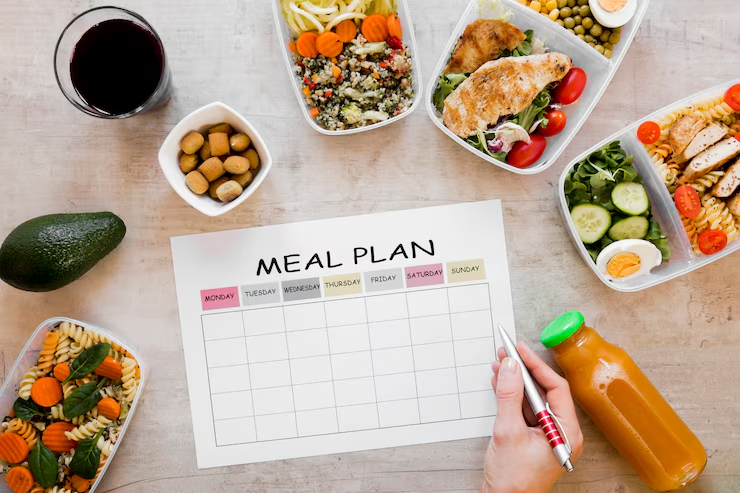
Planning allows you to build balanced meals with the right portions of lean protein, fiber-rich vegetables, healthy fats, and gluten-free whole grains like quinoa or brown rice. This balance keeps you full and energized while promoting steady weight loss. It also helps manage grocery shopping efficiently, reducing waste and saving time.
With a solid gluten free diet weight loss meal plan, you remove the guesswork from eating. Preparing meals in advance ensures you always have nutritious, gluten-free options available, even on your busiest days. It’s a simple but powerful habit that supports lasting, healthy weight management.
How to Meal Plan:
Choose a day to plan and prep your meals for the week.
Make a shopping list of gluten-free foods that align with your goals.
Cook in bulk (e.g., roasting vegetables, grilling chicken) and store meals in containers for easy access.
Include Gluten-Free Superfoods
Incorporating gluten-free superfoods into your meals can elevate your gluten free diet weight loss meal plan by providing concentrated nutrition with fewer calories. Superfoods like quinoa, chia seeds, flaxseeds, sweet potatoes, and berries are naturally gluten-free and rich in vitamins, minerals, and antioxidants.
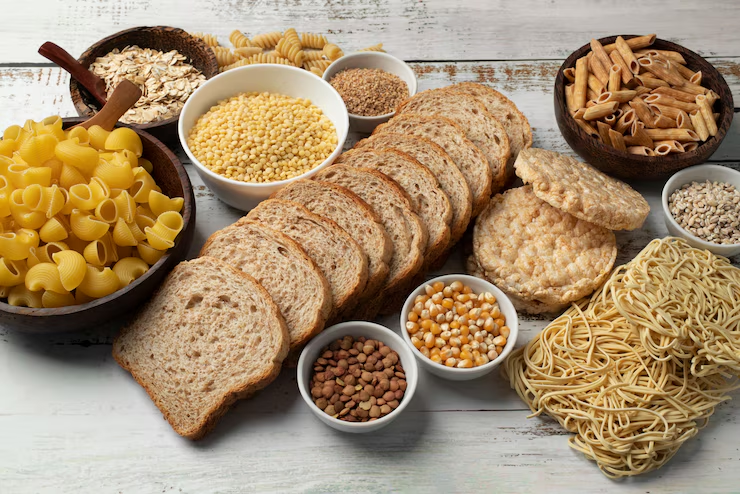
These foods not only support overall health but also help regulate digestion, boost metabolism, and reduce inflammation—key factors in any effective weight loss plan. For example, quinoa provides a complete source of protein, while chia seeds offer omega-3 fatty acids and fiber to keep you fuller longer.
When included in your gluten free diet weight loss meal plan, superfoods can help maintain energy levels throughout the day and curb unhealthy cravings. They’re easy to add to smoothies, salads, or main dishes, making your meals more satisfying and nutrient-dense. This approach ensures you’re not just cutting gluten—but optimizing your diet for real, sustainable fat loss.
Some gluten-free superfoods to consider:
Chia seeds: High in fiber and omega-3 fatty acids
Quinoa: A complete protein and rich in fiber
Kale: Packed with vitamins A, C, K, and fiber
Berries: High in antioxidants, low in calories
Sweet potatoes: Packed with fiber and vitamin A
Sample Gluten-Free Weight Loss Meal Plan
| Meal | Menu | Details |
|---|---|---|
| Breakfast | Chia Pudding with Berries Chia seeds + almond milk (overnight) + berries + honey | Light, fiber-rich start to your gluten free diet weight loss meal plan |
| Coffee or Green Tea (unsweetened) | Boosts metabolism and provides antioxidants | |
| Lunch | Grilled Chicken Salad Greens, tomatoes, cucumbers, grilled chicken, avocado | Packed with lean protein, healthy fats, and gluten-free vegetables |
| Lemon-Olive Oil Dressing | Healthy fat source; aids absorption of nutrients | |
| Water or Herbal Tea | Keeps you hydrated and supports digestion | |
| Snack | Apple with Almond Butter | Balanced snack with natural sugars and healthy fats |
| Dinner | Salmon with Quinoa & Steamed Veggies Broccoli, carrots | High in protein and omega-3s; quinoa adds gluten-free complex carbs |
| Dessert (Optional) | Frozen Banana Bites Sliced banana dipped in dark chocolate & frozen | A healthy sweet treat to satisfy cravings without ruining your gluten free diet weight loss meal plan |
Conclusion
A Gluten Free Diet Weight Loss Meal Plan can be a highly effective strategy for those seeking to shed pounds, improve digestion, and adopt a healthier lifestyle. Eliminating gluten—found in wheat, barley, and rye—often means cutting out many processed, calorie-dense foods like pastries, white bread, and baked goods that are low in nutrients and high in sugars and fats. But simply removing gluten isn’t enough. Success lies in consciously replacing those empty calories with nutrient-rich, naturally gluten-free foods.
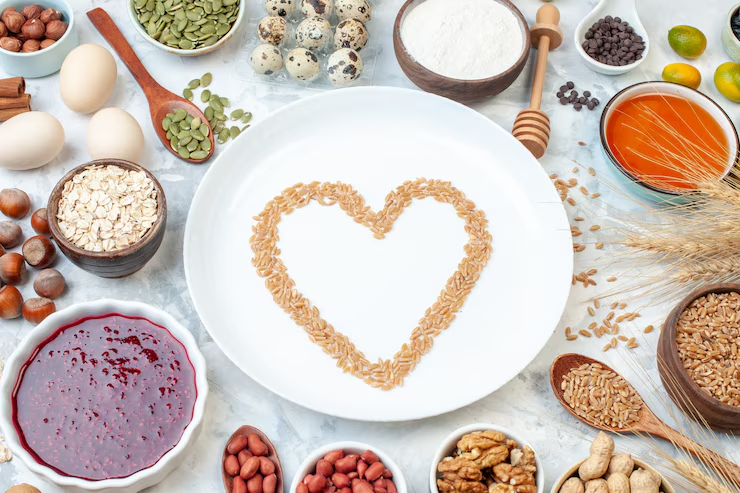
Focus your meals around fresh vegetables, fruits, lean proteins like chicken, fish, tofu, and eggs, and gluten-free whole grains such as quinoa, brown rice, millet, and amaranth. These whole foods are high in fiber and protein—two essential nutrients that enhance satiety, reduce hunger, and stabilize blood sugar levels. For example, a breakfast of scrambled eggs with spinach, a quinoa salad for lunch, and grilled salmon with roasted vegetables for dinner can form the foundation of a well-balanced gluten-free day.
In addition to nutrition, pairing your meal plan with healthy lifestyle habits amplifies results. Regular physical activity such as walking, swimming, or strength training helps burn calories and improve metabolic function. Hydration is also critical—water supports digestion, suppresses appetite, and flushes toxins from the body. Getting enough restful sleep balances hunger hormones and reduces cravings, making it easier to stick to your plan.
In conclusion, a Gluten Free Diet Weight Loss Meal Plan can do more than just eliminate gluten—it can be a pathway to healthier eating and sustainable fat loss when practiced thoughtfully. Stick with clean, balanced meals, watch portions, avoid highly processed gluten-free alternatives, and embrace supportive habits like exercise and hydration. With consistency, you can make meaningful progress toward your weight loss and overall wellness goals.
FAQs
Q1. Can a Gluten Free Diet Weight Loss Meal Plan help me lose weight effectively ?
Yes, a Gluten Free Diet Weight Loss Meal Plan can be effective for weight loss—especially when it emphasizes whole, nutrient-dense foods rather than processed gluten-free alternatives. By eliminating wheat, barley, and rye, you reduce the intake of refined carbs, which can help stabilize blood sugar and reduce cravings. Combining this diet with portion control, physical activity, and hydration boosts fat loss and overall health.
Q2. What foods should I focus on in a Gluten Free Diet Weight Loss Meal Plan?
To get the most out of your Gluten Free Diet Weight Loss Meal Plan, prioritize natural, unprocessed foods. These include:
- Lean proteins (chicken, fish, eggs, tofu)
- Fiber-rich vegetables (broccoli, spinach, carrots)
- Gluten-free whole grains (quinoa, brown rice, millet)
- Healthy fats (avocado, olive oil, nuts)
These foods are low in empty calories and help keep you full for longer periods.
Q3. Are all gluten-free products suitable for weight loss ?
No. Many packaged gluten-free products like cookies, chips, and breads can be high in sugar, starches, and unhealthy fats. Just because something is labeled “gluten-free” doesn’t mean it’s healthy or weight-loss-friendly. When following a Gluten Free Diet Weight Loss Meal Plan, it’s best to limit these processed items and focus on whole foods for sustainable weight loss.
Q4. How can I ensure I get enough fiber in a Gluten Free Diet Weight Loss Meal Plan ?
Many gluten-containing foods like whole wheat bread are rich in fiber, so it’s essential to find gluten-free alternatives that maintain this benefit. Include fiber-packed options such as lentils, beans, chia seeds, fruits, vegetables, and gluten-free grains like quinoa and amaranth in your Gluten Free Diet Weight Loss Meal Plan. These choices help improve digestion and keep you feeling full, which supports weight management.
Q5. Is portion control still important in a Gluten Free Diet Weight Loss Meal Plan ?
Absolutely. While gluten-free foods can be healthy, consuming large portions—even of healthy options—can lead to calorie surplus and hinder weight loss. Be mindful of serving sizes and use portion control strategies such as measuring your food, eating slowly, and avoiding distractions during meals. This ensures your Gluten Free Diet Weight Loss Meal Plan remains balanced and effective.

